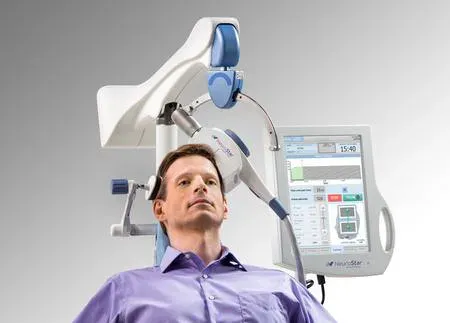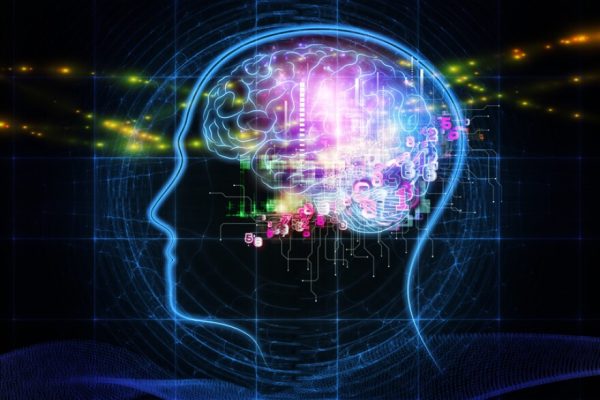In today’s ever-evolving landscape of mental health treatment, we’re witnessing the rise of innovative approaches that offer more effective and less invasive solutions for challenging conditions. One of these groundbreaking treatments is Transcranial Magnetic Stimulation or TMS for short.
Despite its increasing popularity, many people still find themselves pondering a fundamental question: “How does TMS work?” In this in-depth exploration, we’ll embark on a journey to demystify TMS therapy and uncover the science behind its transformative potential.
TMS: A Brief Introduction
Before we delve into the intricacies of how TMS therapy works, it’s crucial to grasp what TMS is. TMS is a non-invasive procedure that employs magnetic fields to stimulate nerve cells in the brain. Primarily used for the treatment of depression, it’s often sought when other traditional treatments, like medication or therapy, don’t provide the desired outcomes.
Does TMS Therapy Work?
This is the million-dollar question for many. Clinical studies and research have shown promising results, especially for treatment-resistant depression. Many patients report significant improvements in their mood, with some even achieving full remission.
However, it’s essential to remember that individual results can vary. While many patients benefit immensely from TMS, others might experience more subtle changes.
The Science Behind TMS
Magnetic Principles
TMS operates on the fundamental principle of electromagnetism. When an electric current passes through a coil, it produces a magnetic field. This magnetic field, when introduced to the brain, can influence the electrical currents within neurons.
Targeted Stimulation
The beauty of TMS lies in its precision. It’s designed to target specific regions of the brain associated with mood regulation, particularly the dorsolateral prefrontal cortex.
How Does TMS Therapy Work?
To put it simply, TMS therapy aims to ‘reset’ or ‘awaken’ certain areas of the brain that might be underactive or dysfunctional, especially in individuals with depression. Here’s a step-by-step breakdown of how TMS therapy works:
Preparation
The journey of a TMS therapy session begins with preparation. The patient is seated comfortably in a chair, much like settling into a cozy armchair for a good read. To ensure comfort and protection, especially from the machine’s distinctive clicking sound, the patient is often provided with earplugs. It’s all about creating a serene and distraction-free environment for the therapeutic process to unfold.
Coil Placement
Now, let’s introduce the star of the show: the coil. This specialized device is the primary workhorse of TMS therapy. The coil is gently positioned against the scalp, with utmost precision. Its placement is crucial because it determines which specific brain regions will receive the therapeutic magnetic pulses. Imagine it as a scientist’s tool, pinpointing the exact areas of the brain that need a little nudge to get back into balance.
Magnetic Pulses
With the coil securely in place, it’s time for the main event—the delivery of magnetic pulses. This is where the patient might start to feel something intriguing. The magnetic pulses emanating from the coil create a sensation on the scalp, often described as akin to a gentle tapping.
It’s a unique experience, neither painful nor uncomfortable. The remarkable aspect of these pulses is their ability to penetrate the skull and reach the brain’s inner workings without causing any harm or discomfort.
Neuronal Activation
Here’s where the magic unfolds within the brain. As the magnetic pulses reach their destination—the specific brain regions targeted by the coil—they interact with the neurons. The neurons are like the electric wires of the brain, carrying messages and orchestrating various functions. Depending on the intensity and frequency of the magnetic pulses, they can either stimulate or inhibit the activity of these neurons.
Cumulative Effect
Now, it’s important to set expectations right. TMS therapy isn’t a one-and-done affair. Unlike some treatments that offer immediate relief, TMS often involves multiple sessions. It’s like the slow and steady progress of a marathon runner. The cumulative effect of these sessions is where the real transformation occurs.
Over time, as the brain’s neurons respond and adapt to the therapy, depressive symptoms can gradually subside, leading to an improved mood and a sense of well-being.
The Safety and Side Effects
Understanding how TMS therapy works is also about recognizing its safety and potential side effects. TMS is FDA-approved and is considered safe with minimal side effects. Some common side effects include:
- Scalp Discomfort: Due to the tapping sensation during treatment.
- Headaches: These are generally mild and subside after the initial sessions.
- Lightheadedness: A temporary feeling that usually resolves shortly after treatment.
It’s crucial to discuss any concerns with a healthcare professional who can provide guidance tailored to individual circumstances.
TMS: Beyond Depression
While TMS is most widely known for its success in treating depression, it has also shown promise in addressing other mental health conditions, including:
- Anxiety Disorders
- Obsessive-Compulsive Disorder (OCD)
- Post-Traumatic Stress Disorder (PTSD)
- Bipolar Disorder
- Schizophrenia
- Substance Use Disorders
Conclusion: Embracing the Future of Mental Health Treatment
In the quest to comprehend the human mind and its intricacies, treatments like TMS stand out as beacons of hope, showcasing the blend of science and innovation. While the journey of understanding TMS, how it works, its applications, and its potential—is ongoing, one thing is clear: it represents a monumental step forward in the realm of mental health treatments.
For those who’ve often felt at a crossroads with traditional treatments, TMS offers a novel path. By grasping how TMS therapy works and its underlying principles, we can better appreciate its transformative potential in changing lives and shaping the future of mental health care.





